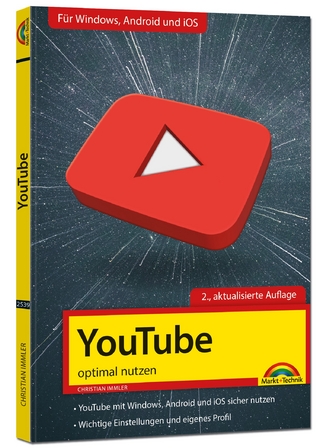
BIRT
Addison-Wesley Educational Publishers Inc (Verlag)
978-0-321-58027-6 (ISBN)
- Titel erscheint in neuer Auflage
- Artikel merken
The first in a two-book series about this exciting technology, BIRT, Second Edition: A Field Guide to Reporting is the authoritative guide to using BIRT Report Designer, the graphical tool that enables users of all levels to build reports, simple to sophisticated, without any programming.
BIRT, Second Edition: A Field Guide to Reporting is an essential resource for users who want to create presentation quality reports from day one. The extensive examples, step-by-step instructions, and abundant illustrations help new users develop their report design skills quickly. Power users can find the information they need to make the most of the product’s rich set of features to build complex and compelling reports. By the time you finish this book, you learn the following and more
Design effective business and corporate reports that convey information through images, charts, tables, and cross tabs
Build reports using data from a variety of sources, including databases, XML documents, spreadsheets, and web services
Enliven reports with interactive features, such as hyperlinks, Tooltips, and highlighting
Create consistently styled reports and collaborate with other report designers through the use of templates and libraries of reusable elements
Localize reports for an international audience
This second edition, revised and expanded, adds updated examples and covers all the new and improved product features, including
Cross tabs and OLAP cubes
New chart types, including Gantt, bubble, tube, and cone charts
Web services as a new data source
New report output formats, including doc, ppt, xls, and PostScript
The capability for reports to reference CSS
Localization of report parameter and data values
The authors are members of the extended BIRT development team and have backgrounds in both computer science and technical writing. Collectively, they have many years of experience in technical consulting, training, writing, and publishing about reporting, business intelligence tools, and database technologies.
Foreword xix
Preface xxiii
Acknowledgments xxix
Part I: Installing BIRT 1
Chapter 1: Prerequisites for BIRT 3
Downloading Eclipse BIRT components 3
BIRT Report Designer software requirements 5
About types of BIRT builds 7
Chapter 2: Installing a BIRT Report Designer 9
Installing BIRT Report Designer Full Eclipse Install 9
Installing BIRT RCP Report Designer 10
Troubleshooting installation problems 11
Installing a language pack 13
Updating a BIRT Report Designer installation 14
Updating BIRT RCP Report Designer installation 15
Part II: Getting Started 17
Chapter 3: Learning the Basics 19
About BIRT reports 19
Overview of the report design process 19
About the report design environment 21
Viewing sample reports 30
Tutorial 1: Building a simple listing report 32
Chapter 4: Planning Your Report 53
Identifying the content of the report 54
Determining how the report will be viewed 55
Considering international reporting requirements 56
Deciding the layout and format of the report 56
Drawing a mock-up 58
Considering reuse of report components 58
Managing report design resources 59
Deciding how the report will be deployed 59
Part III: Accessing and Binding Data 61
Chapter 5: Connecting to a Data Source 63
About BIRT data sources 63
Accessing data using JDBC 64
Accessing data in a text file 70
Accessing data in an XML file 73
Accessing a web service 74
Creating reusable data sources 76
Setting connection properties when a report runs 81
Troubleshooting data source problems 87
Chapter 6: Retrieving Data 89
About data sets 89
Selecting data 90
Viewing and changing output columns 110
Adding a computed field to a data set 111
Joining data sets 113
Verifying the data returned by a data set 115
Specifying the data to retrieve at run time 116
Chapter 7: Binding Data 119
Understanding column bindings 119
Creating column bindings 122
Editing and deleting column bindings 124
Copying data elements 125
More about column-binding expressions 126
Part IV: Designing Reports 129
Chapter 8: Laying Out a Report 131
Understanding the layout model 131
Creating the sections of a report 134
Placing report elements 142
Chapter 9: Displaying Text 153
Types of textual elements 153
Deciding which textual element to use 155
Using a dynamic text element 158
Using a label element 159
Using a text element 160
Chapter 10: Formatting Report Content 165
Formatting data 166
Formatting with styles 172
Formatting data based on conditions 182
Alternating row colors in a table 187
Specifying alignment of content in a table or grid 190
Adjusting the spacing of content in a report 191
Specifying fixed layout for HTML output 196
Displaying content across multiple columns 199
Specifying alternate values for display 201
Hiding elements based on conditions 203
Chapter 11: Sorting and Grouping Data 207
Sorting data 208
Grouping data 212
Tutorial 2: Grouping report data 231
Task 8: Format the report 246
Task 9: Preview the report in the BIRT report viewer 248
Task 10: Display credit limit ranges in the table of contents 249
Chapter 12: Aggregating Data 253
Types of aggregate calculations 254
Placing aggregate data 257
Creating an aggregation 259
Filtering aggregate data 265
Calculating percentages 267
Creating a summary report 271
Chapter 13: Writing Expressions 277
Basic concepts 278
Using the expression builder 279
Manipulating numeric data 282
Manipulating string data 284
Manipulating date-and-time data 292
Using Boolean expressions 294
Chapter 14: Filtering Data 297
Filtering opportunities 297
Specifying conditions on row retrieval 298
Filtering data after row retrieval 302
Chapter 15: Enabling the User to Filter Data 315
About report parameters 315
Planning to use report parameters 317
Ways to enable user filtering 317
Enabling the user to filter at query run time 317
Enabling the user to filter after running the query 325
Designing the presentation of report parameters 328
Testing the report parameters 349
Tutorial 3: Creating and using report parameters 350
Chapter 16: Building a Report That Contains Subreports 367
Creating the report structure 368
Tutorial 4: Building a report containing side-by-side subreports 372
Chapter 17: Using a Chart 409
Surveying the types of charts 409
Tutorial 5: Creating a standalone chart 416
Exploring the chart builder 430
Using a chart as part of a report 433
Chapter 18: Displaying Data in Charts 437
Linking a data set to a chart 437
Understanding the axes of a chart 438
Grouping and sorting category data 442
Grouping optional Y value data 446
Using multiple y-axes 450
Transposing the chart axes 450
Filtering data 451
Changing default report parameters 452
Creating data bindings 452
Previewing data and chart 453
Creating a combination chart 455
Defining a meter chart 456
Chapter 19: Laying Out and Formatting a Chart 459
Formatting specific types of charts 460
Formatting a pie chart 470
Laying out and formatting the chart 477
Formatting numbers, dates, and times 482
Formatting the chart legend, plot, and title 485
Formatting axis titles, markers, lines, and labels 496
Formatting a series 507
Chapter 20: Presenting Data in a Cross Tab 515
Tutorial 6: Creating a cross tab 516
Understanding cube terms 532
Setting up data for a cross tab 533
Building a cross tab 543
Part V: Enhancing Reports 557
Chapter 21: Designing a Multipage Report 559
Planning the page layout 559
Controlling pagination 560
Customizing the master page 566
Using multiple master pages 577
Chapter 22: Adding Interactive Viewing Features 581
Creating hyperlinks 581
Creating a table of contents 591
Adding interactive chart features 594
Adding interactive elements to an HTML report 598
Identifying report elements for data export 600
Chapter 23: Building a Shared Report Development Framework 603
Comparing report designs, libraries, and templates 604
Sharing report elements in a library 606
Sharing a report layout as a template 622
Chapter 24: Localizing Text 629
Overview of the localization process 630
Assigning a resource file to a report 631
Assigning a resource key to a label or text element 633
Changing localized text in a label or text element to static text 634
Assigning a resource key to chart text 635
Changing localized chart text to static text 636
Assigning a resource key to a value in a data element 637
Assigning a resource key to a report parameter 639
Editing a resource file 641
Previewing a report in different locales 642
Glossary 645
Index 707
| Erscheint lt. Verlag | 7.8.2008 |
|---|---|
| Verlagsort | New Jersey |
| Sprache | englisch |
| Maße | 234 x 178 mm |
| Gewicht | 1134 g |
| Themenwelt | Mathematik / Informatik ► Informatik ► Web / Internet |
| ISBN-10 | 0-321-58027-3 / 0321580273 |
| ISBN-13 | 978-0-321-58027-6 / 9780321580276 |
| Zustand | Neuware |
| Haben Sie eine Frage zum Produkt? |
aus dem Bereich



